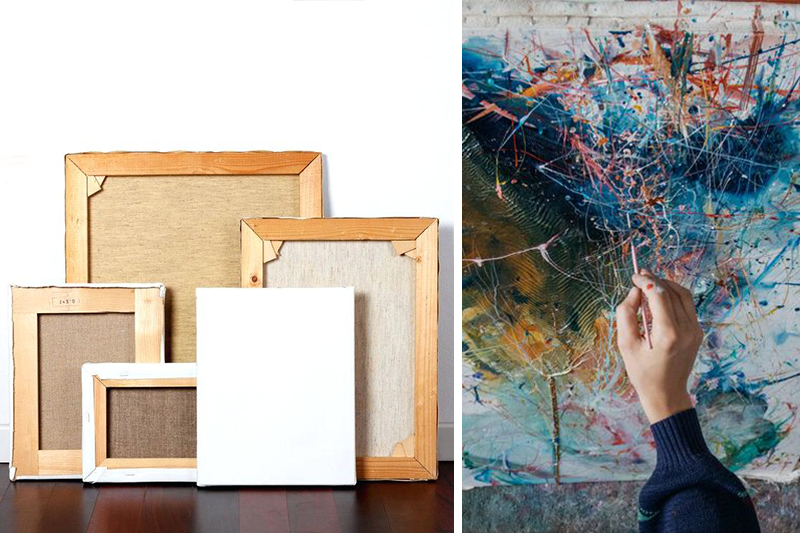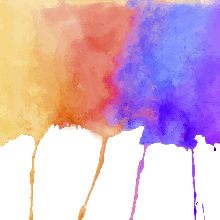Custom canvas prints are currently one of the most popular décor items. Using them creates a dynamic look and gives a sense of luxury to any room. But where does the story of canvas photo printing begin?
Historically, canvas paintings go back as far as (at least) the 1400s, though, rare back then. Canvas art really took off in the 16th century, with oil paintings on canvas taking the place of oil paintings on wooden panels for many fine art painters of the time. Though the wood panel paintings were magnificent and durable, they were incredibly heavy, even at a smaller size. It was also tough to use the wood panels on a large scale. And so, canvas solved both of those problems, in addition, making them much more portable. And much like canvas prints and paintings today, lightweight wooden frame (or stretcher bars) were used to stretch the canvas material, being an adequate tool for artists to professionally mount their work.

Modern canvas material is generally either made from linen, cotton, or PVC. In the beginning, the canvas material was produced from hemp taken from cannabis plants, since linen was difficult and expensive to process. Artists tended to prefer hemp for optimal results as well.
In the beginning of the 19th century, cotton begun to dominate as the material of choice among artists, as it was easier to stretch and more flexible for large sized paintings. The longevity of cotton artwork can be easily improved with “priming” -- applying a layer of gesso over the canvas to prevent the oil colors from bleeding too much into the fabric surface.
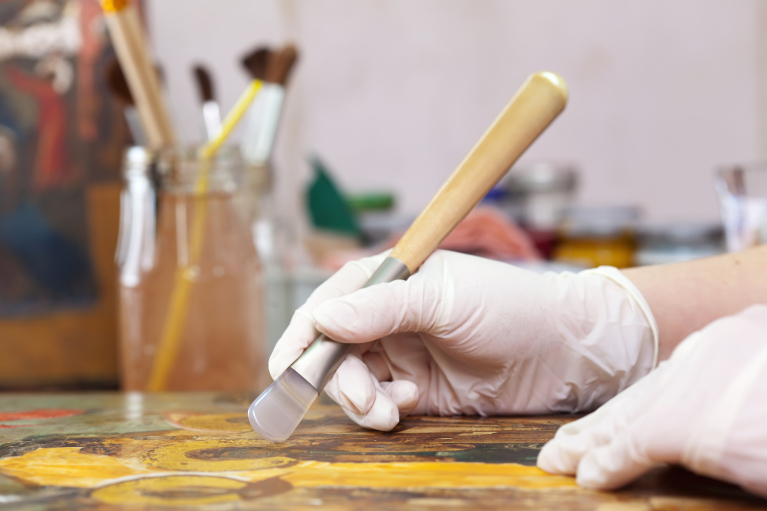
Now let's fast forward to 1826: the invention of photography. Canvas paintings are still a relevant art form, as well as a way to capture a moment in time or the way that a person looked. (Think of the celebrity paintings of the 1700s, for example: we only have an idea of how George Washington and Ben Franklin looked based on portrait paintings of the time.) But the year 1826 was a history game-changer. As far as records show, the first photograph was taken in France around 1826 by Joseph Nicéphore Niépce. Moreover, the first photograph of a person was taken in 1838 (also in France) by Louis Daguerre. By 1888, cameras took off with amateur photographers for the first time ever, becoming a popular item to buy for those who could afford it ($25 for a camera!). These cameras made it easy for anyone to use, as they arrived with a roll of film already installed. When the roll of film was all used up, they would ship the whole camera off to the manufacturer to print and to install new film. And a little more than 10 years later, in 1900, cameras became more affordable, becoming a common household item.
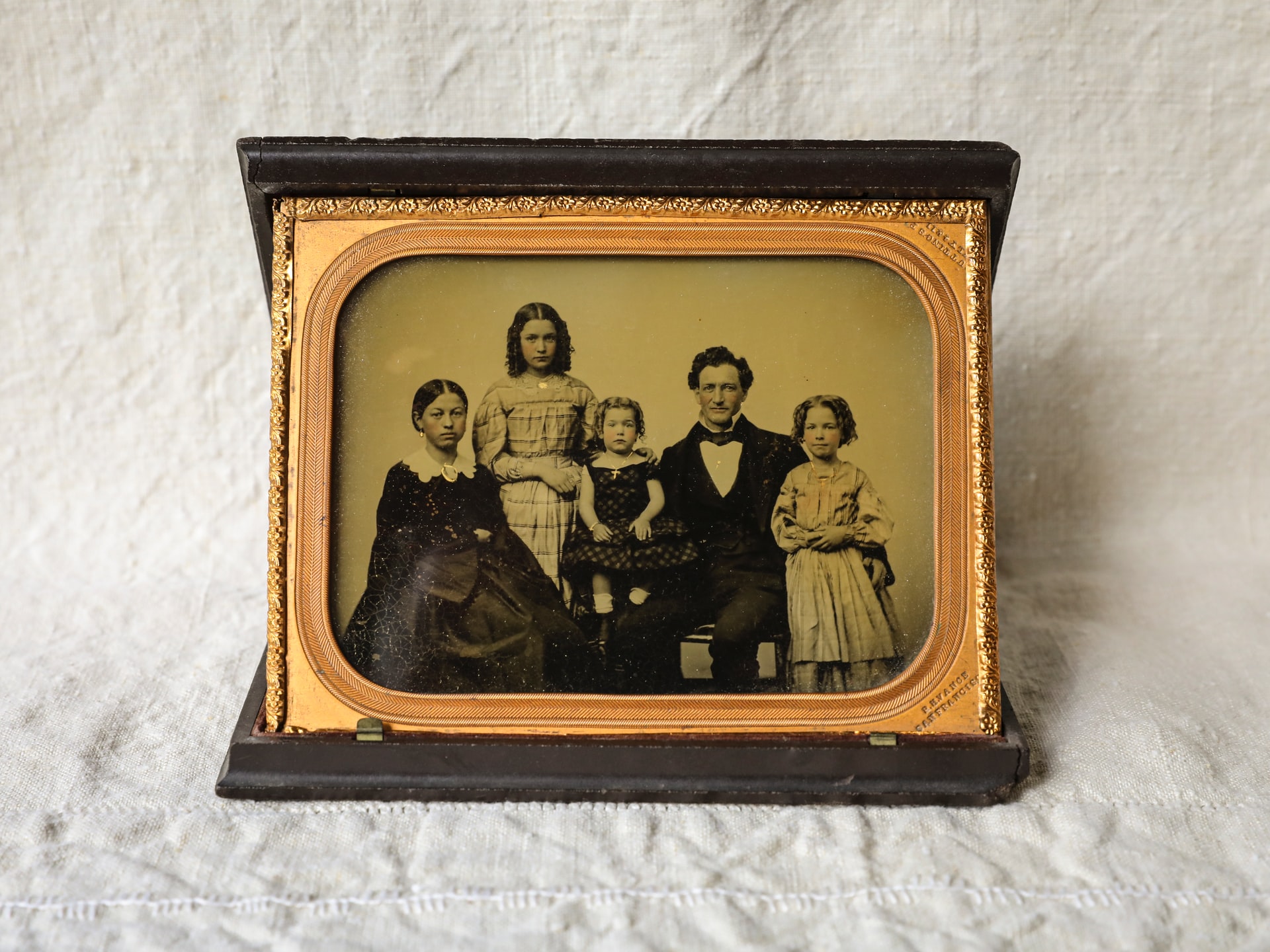 Daguerreotype, C. 1852
Daguerreotype, C. 1852
Photographs were first commonly printed on metal plates called daguerreotypes (named after Louis Daguerre). Throughout the late 1800s and into the 20th century, various printing processes were used alongside the daguerreotype, such as cyanotypes, calotypes, salt paper prints, and gelatin silver prints. The gelatin silver prints (black and white images on paper) became popular around the turn of the century and into the 1930s. By the 1940s, the instant camera (or what we all refer to today as "Polaroid cameras") was invented, being the first time in history that a print could develop "instantly" after snapping a photo. Moving right along in progress, the first digital camera was developed in 1975, digital cameras becoming commonplace by the late 1990s.
And then two became one. Inspired by the materials used by fine art painters, the first photo was said to have been printed on canvas during the 1840s, shortly after the first photo of a person was taken. The process used to create this print was the same process used to create cyanotypes, which were primarily printed on paper. At this time in history, canvas prints existed, though they were not common. By 1875, offset lithographic printing was invented and had reached popularity by the 1910s. To put it simply, offset printing is printing technology that has the capability of mass producing the same image (very quickly), using engravings and ink. Offset printing has advanced even further and is still used today, producing similar results as latex or inkjet printing. With the advancement of offset printing techniques, the use of canvas to print images has gradually increased throughout the past century, because it keeps the production of canvas artwork highly economical.
By the early 1990s, digital color printers became available to the public. And by the early to mid 2000s, it was common for people to have easy access to print digital images, either from inkjet printers at home, school, or work.

Today, traditional paintings aren't sought after as much as they were prior to the invention of photography. With the increasing use of digital photos (billions of digital images are taken every day!), both in the professional world of photography as well as the amateur world, along with advancements in digital printing, printing photos on canvas has grown immensely in popularity within the past 20 years.
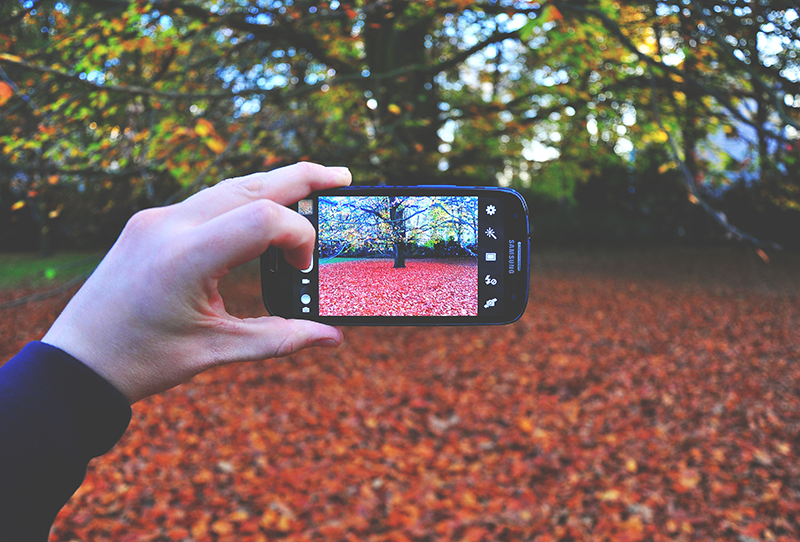
Long lasting, and available in many sizes, canvas printing allows people to create personalized photo prints from digital photos with incredible precision and relatively little artistic expertise at an affordable cost. Canvas prints can be used as personalized home decor as well as in the office, being an incredibly versatile form of decorating.
Here at Simple Canvas Prints, we have been providing high-quality custom canvas prints since 2015, and we continue to show our customers just how dynamic, creative, and beautiful canvas prints can truly be!
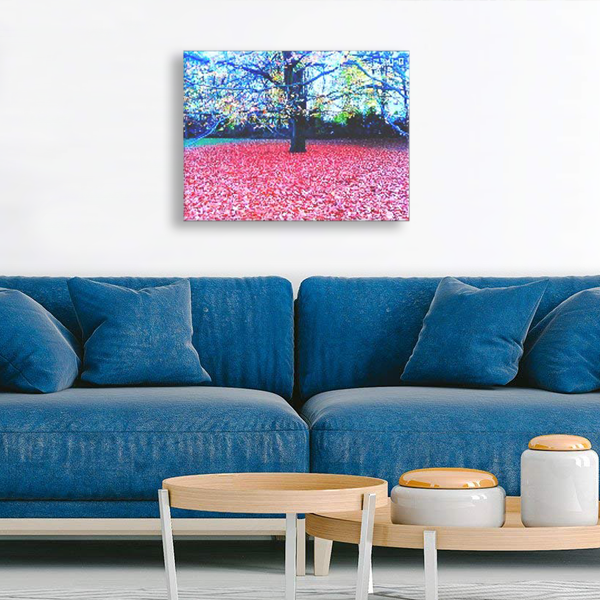
| GET STARTED |

